Research on Clustering Equivalent Modeling of Large-Scale Photovoltaic Power Plants
*, ,,,
(School of Electric Engineering and Automation, Hefei University of Technology, Hefei 230041, China)
Abstract: There are dozens or hundreds of grid-connected inverters for large-scale photovoltaic power plants. In order to facilitate the study of the impact that large-scale photovoltaic power plants have on the power system while avoiding the need to establish a detailed model for each inverter, it is necessary to establish the equivalent model of large-scale photovoltaic power plants. Power generation units of the same type are combined by K-means clustering algorithm to reduce the simulation scale in number. According to the actual data of Shenmu large-scale grid-connected photovoltaic power station,employing RT-LAB software is used to conduct simulation verification and error analysis. The simulation results verify the proposed clustering equivalent modeling method is effective and can accurately track photovoltaic power station’s dynamic characteristics.
Keywords: Photovoltaic power plant, inverter, clustering equivalent, dynamic, RT-LAB.
1 Introduction
In recent years, due to fossil energy depletion and environmental degradation, demand for renewable energy continues to increase. Renewable energy power generation systems account for an increasing share of electricity, and as a result, the photovoltaic industry has been developing rapidly. In April 2016, the International Energy Agency's Photovoltaic Power Generation System(IEA PVPS) announced a global PV installed capacity of at least 227GW. In 1993 Germany built the first megawatt grid-connected photovoltaic power plant, and subsequently, large-scale grid-connected photovoltaic power generation has become a main trend[1-2].
Construction of large-scale photovoltaic power plants is an effective way to focus on the use of solar energy.However, the large number of converters in large-scale photovoltaic power generation systems has made modeling very complex and requirement for extensive time and resources for simulation analysis. As a result, it is necessary to establish large-scale photovoltaic power plant equivalent model. In [3], the equivalent model of grid-connected photovoltaic power plant is established by the vector method and controlled source method,but for simplification, some inherent properties of grid-connected photovoltaic power plants are neglected in the process. In [4], an equivalent model of a large synchronous photovoltaic power plant is obtained by controlling the equivalent photovoltaic power generation unit using a synchronous power controller, but it is aimed at a photovoltaic power plant with virtual synchronization characteristics and is not suitable for ordinary photovoltaic power plants. In the literature[5],the whole photovoltaic power plant is equivalent to a power generation unit, and the local occlusion of the PV array is considered. However, the reactive power response characteristic of the polymer model is different from the detailed model. In [6], an on- line dynamic equivalent method for large-scale photovoltaic power plant is proposed, which is suitable for electromechanical simulation. The inverter clustering index is calculated and clustered on-line. However, it is not accurate enough using the approach of taking the "most representative"parameters of an inverter as equivalent parameters.In [7], a large-scale clustering modeling method for large-scale photovoltaic power plants is proposed by using the characteristic distance index of the inverter control parameters and using the K-means clustering algorithm. However, it only calculates the equivalent parameters of the inverter and does not consider parameters such as the impedance of the transformer and line. In [8], the polymerization equivalent model is constructed, but ignores the different parameters between different power generation units.
This paper studies the clustering equivalent modeling of photovoltaic power plant dealing with problems of large scale and long simulation time in the modeling of large-scale photovoltaic power plants. Taking the inverter as the key point, considering the output characteristics of the PV array, the control system, the transformer and the transmission line, the whole clustering equivalent model of the PV power plant is established, and the calculation of the equivalent parameters and the deviation calculation are studied. Finally, RT-LAB software was used to simulate the actual data of a grid-connected photovoltaic power plant in Shenmu, Shanxi province to verify the adaptability of the proposed method.
2 Photovoltaic power generation system and its modeling
A large-scale grid-connected photovoltaic power generation system is constituted by a number of photovoltaic power generation units which are connected to the collector line. As showed in Fig.1, a large number of photovoltaic array components generate the DC power and then distribute to the inverter which converts DC power to AC power, and finally, AC power through the transformer access to the power grid.
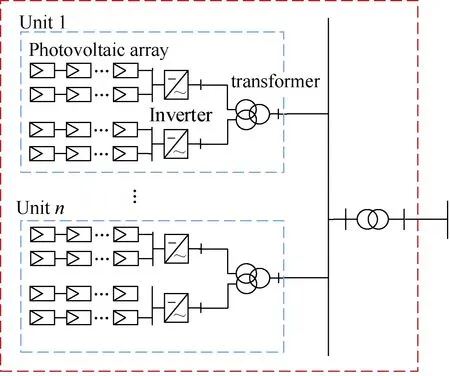
Fig.1 Typical structure of photovoltaic power plants
2.1 Modeling of solar PV arrays
A photovoltaic cell is a device that converts solar energy into electrical energy. Its volt-ampere characteristics will change with the external environmental(such as light intensity and temperature) changes and has non-linear characteristics. The mathematical model of photovoltaic cells can be expressed as:

Where,
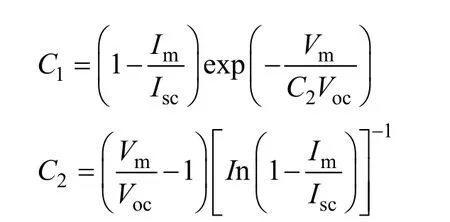
In the formula (1),I,Isc,Im,V,Voc,Vmrepresent the output current, the short-circuit current, the maximum power current, the voltage, the open voltage, and the maximum power voltage of the photovoltaic cell respectively. At different battery temperatures and light intensities,Isc,Im,Voc,Vmwill be in accordance with certain law changes, through the introduction of the corresponding compensation coefficient, the approximate calculation of any light intensitySand the battery temperature T under the four technical parameters:


Where,Iscref,Imcref,Vmcref,Vocrefare the technical parameter of the photovoltaic cell atTref= 25℃. The variation of the temperature ΔT=T-Tref, the change in intensity of light ΔS=S/Sref- 1, the typical values of the coefficients a, b, c, k is0.0025/℃, 0.5,0.00288/℃, 0.00288℃ ·m2/W respectively.
2.2 Inverter control modeling
A Photovoltaic grid-connected inverter is equipment that converts DC power from the solar cell output into AC power and then inputs to the power grid while meeting the requirements of the grid. Photovoltaic grid-connected inverter is the core equipment and is directly related to the dynamic performance of the system. In this paper, the inverter uses LCL filter, and double closed-loop control mode.
Ignoring the coupling term between the dq-axes,the inner current loop transfer function of the inverter can be expressed as:

3 Photovoltaic unit clustering equivalent modeling
Large-scale photovoltaic power plants generally face long-distance transmission problems. From the grid point of view, research is more concerned with showing the external characteristics of the PV power plant as a whole. For the study of the grid-connected characteristics of the large-scale photovoltaic power plant which are above the MW level, the simulation model is required to simulate the dynamic performance of the public connection point, and as such there is no need to reflect the specific characteristics of each power generation unit.The photovoltaic power plant can be equivalent to one or more polymerized power generation units in the case where each power generation unit in the PV plant exhibit consistent external characteristics under steady state or transient conditions. The establishment of the equivalent model needs to meet the following conditions:

Fig.2 Block diagram of double closed-loop control of photovoltaic inverters
● The voltage of the grid point of the photovoltaic power station is constantly either before or after the equivalent;
● The equivalent rated capacity of the equivalent polymerization model shall be the same as the total rated capacity of all power generation units in the detailed model;
● The active power and reactive power output at the grid point of the equivalent polymerization model are the same as the sum of active power and reactive power output at the PCC point of the detailed model.
3.1 Clustering of photovoltaic power generation units
The analysis of the characteristics of the photovoltaic power generation unit in the previous section illustrates that the output characteristics of the voltage, current, and active power of the photovoltaic array vary with the irradiation intensitySand the temperatureT. Under different S and T conditions, the maximum power points are also different, directly affecting the active power output of the photovoltaic array. The real-time active power of the photovoltaic power generation unit is not only related to S and T, but is also a comprehensive reflection of the atmospheric environment, the installed geographical location and the actual operation of the control system. Therefore, the irradiation intensity S,temperature T and real-time active power are selected as clustering indicators.
The K-means clustering method divides the data objects into different groups through an iterative calculation. By employing this method, objects in the same group are of high similarity, while objects affiliated to different groups are not. The specific steps are as follows:
(1) Randomly selectkobjects as the initial cluster centers from n data objects.
(2) Choose the mean value of each cluster objects as central objects. Then calculate the Euclidean distance between each object and these central objects, and re-divide the corresponding objects according to the minimum distance.
(3) Recalculate the mean of each cluster.
(4) Repeat step 2 through 3 until each cluster no longer changes.
3.2 Equivalent of photovoltaic power generation unit
3.2.1 Equivalent modeling of photovoltaic arrays
To maintain the output voltage of the PV array as unchanged before and after the equivalent, then the number of battery modules in series is unchanged. At the same time, to ensure the output power remains unchanged before and after the equivalent, then the output current of the equivalent PV array needs to increase to n times of the original, namely:

Where,NPis the parallel number of the individual PV array components, andNP′ is the parallel number of the equivalent PV array components, n is the number of photovoltaic cells in the cluster.
3.2.2 Equivalent modeling of photovoltaic inverters
According to the inverter control equation, the regulator capacitor of the equivalent DC side, AC side filter parameters and control parameters need to meet the following expression:

In the formula,Cd′c,Cdcrepresent the capacitor parameter values of the DC side of the model before and after the equivalent respectively.L′,C′,R′represents the equivalent filter inductance, capacitance,resistance parameters.L,C,Rrepresents the filter inductance, capacitance, and resistance before the equivalent.KP′ andKPrepresent the proportional constants of the current inner rings before and after the equivalent respectively, andKI′andKIrepresent the integral constants of the current inner rings before and after the equivalent respectively.
3.2.3 Equivalent modeling of collector booster circuit
(1) Step-up transformer equivalent model.
The rear power losses of transformer before and after the equivalent are respectively:

Where,nrepresents the number of transformers,Ithe current flowing through the transformer,ZT,ZT′represent the impedance value of the transformer before and after the equivalent respectively.
According to the loss of power of the transformer being unchanged before and after the equivalent, the following formula is available:

(2) Collector line equivalent modeling.
The power losses of the collector line before and after the equivalent are respectively:

According to the loss of power of the collector line remaining unchanged before and after the equivalent, the following formula is available:

Taking the actual situation of Shenmu Power Station as an example, the PV power plant detailed model of 5MW composed of 10 inverters of 500kW was built-in Matlab/Simlink software. The equivalent model of the PV array, inverter and the collector booster system is constructed. The equivalent model of photovoltaic power plants with one clusters and Clustering equivalent model is then constructed. The detailed structure of a photovoltaic power plant is shown in Fig.3, two photovoltaic inverters of 500kW, and a dual split transformer which connection method is Yn11-Yn11-D and the ratio is 0.315/0.315/35kV form a photovoltaic power generation unit with a capacity of 1MW.8 photovoltaic power generation units are connected to the upper 110kV substation through the overhead line after converging at the 35kV busbar common connection point. Table 1 shows the parameters of the eight power generation units. According to the three indicators of the photovoltaic power generation unit group, the corresponding three-dimensional map is shown in the Fig.4, and the clustering result of the power plant is shown in the Tab.2. The clustering equivalent model of photovoltaic power plants with one cluster and three clusters is constructed in Fig.5. Finally, applying the above clustering and equivalent methods, the parameters of the Clustering equivalent power generation unit are shown in Tab.3. The parameters of the inverter before equivalent and after equivalent are shown in the Tab.4.
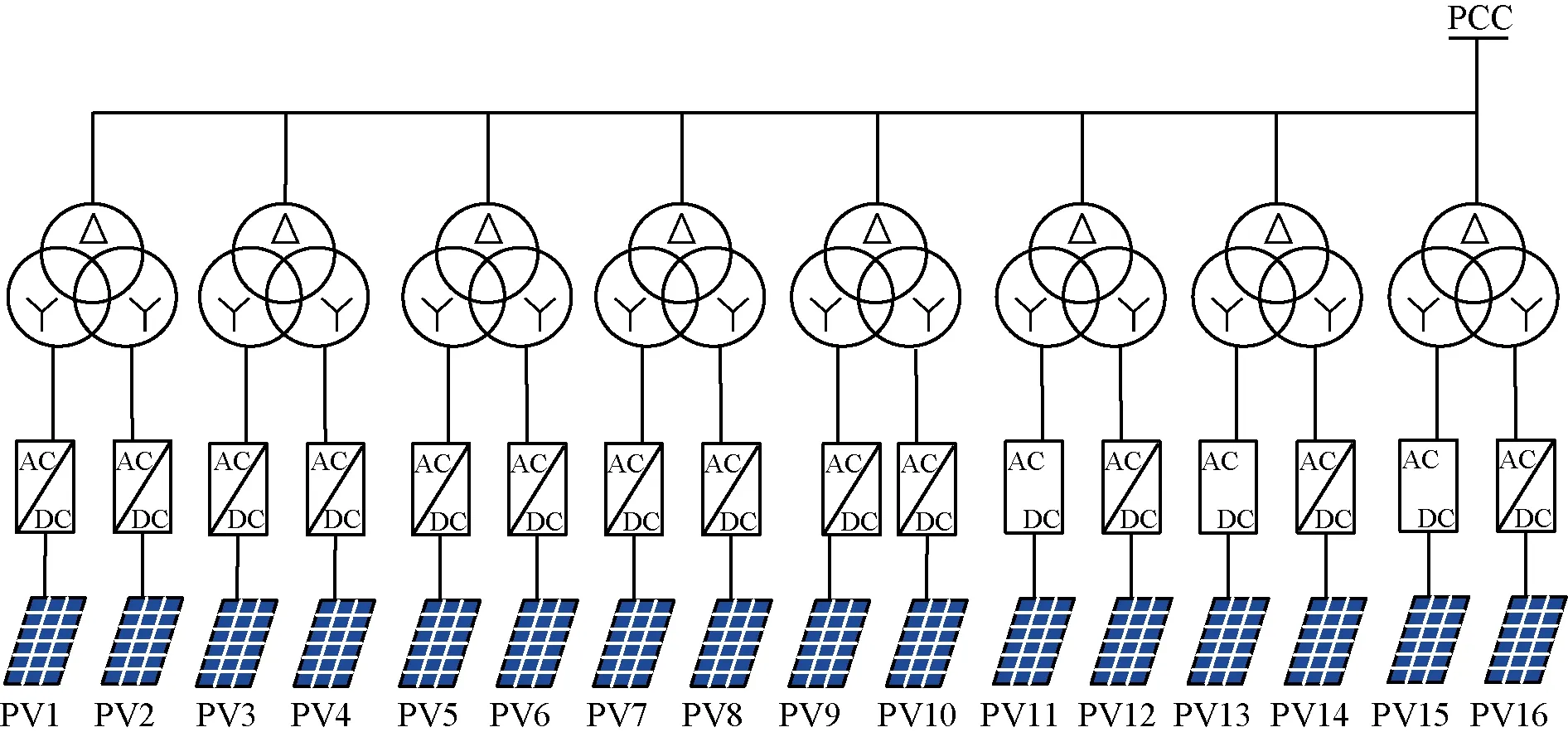
Fig.3 Detailed model of Shenmu photovoltaic power plants

Table 1 The parameters of the eight power generation units
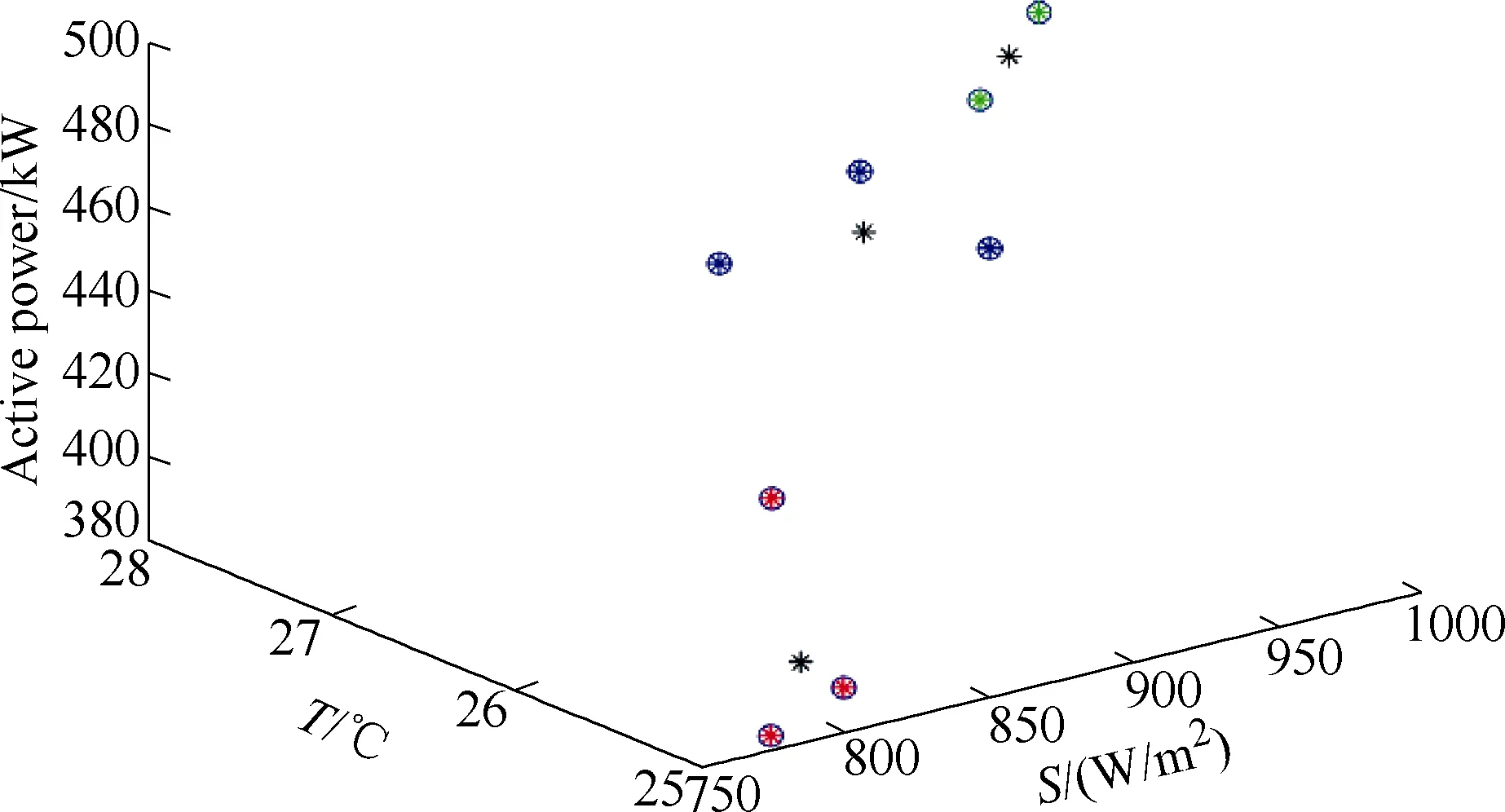
Fig.4 The corresponding three-dimensional map of parameter

Table 2 The clustering result of the power plant
(3) Calculation of equivalent deviations.
Because the disturbed trajectory can accurately reflect the dynamic behavior of the system under the disturbance. This paper takes the response curve of the detailed model under the typical perturbation as the"reference response curve". The same perturbation is added to the PV power system model under different equivalence schemes to obtain the transient response curves. Comparing with the reference response curve,the accuracy of the equivalent model is evaluated by quantifying the different degree of the disturbed trajectory.

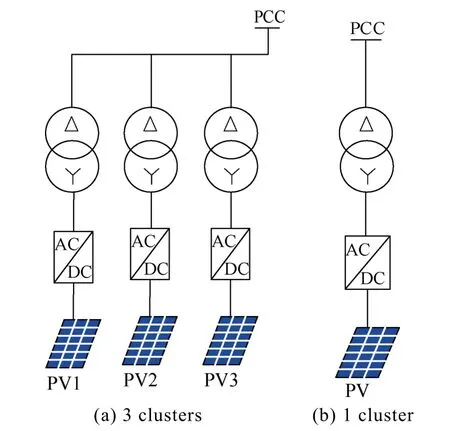
Fig.5 Equivalent model of the power plant

Table 3 The parameters of the clustering equivalent power generation unit

Table 4 The parameters of the inverter before equivalent and after equivalent
In the formula,t0refers to the start time of the transient,τrefers to the transient time,Xrefers to the output parameter value of the equivalent model,X0refers to the output parameter value of the detailed model.
4 Simulation and analysis
Using Matlab simulation where simulation scale and the simulation time are often limited, the large scale and complexity of photovoltaic power generation systems often results is unacceptable simulation times and insufficient memory. As a result, we have changed from Matlab simulation to an RT-LAB simulation.RT-LAB software is a simulation software package based on the signal system application and model design developed by Opal-RT, a company from Canada. The simulation model established by Matlab can run on the RT-LAB real-time simulation platform through the multiprocessor's target machine and the host computer,and monitor and tune the target machine in real time through the running window. RT-LAB can divide the model into several subsystems running in parallel. Every subsystem connects to each other through the line of fire(IEEE-1394), can greatly accelerate the running speed of the model. RT-LAB uses ARTEMIS real-time algorithm.The assigned steady state network topology is stored in memory. If the stored topology appears when the system is running, the topology can be read directly from the memory, thus saving a lot of recalculation time,improving simulation time and accuracy, making the model based on real-time operation possible.
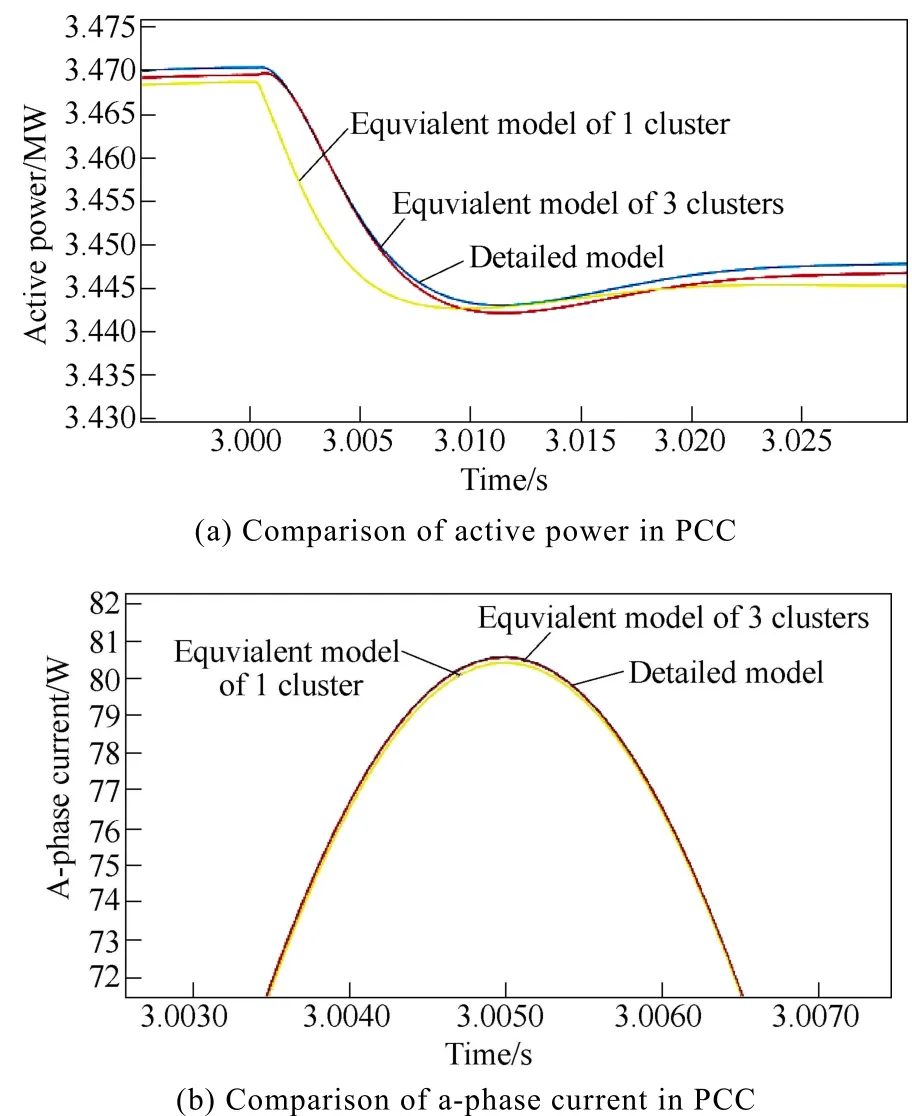
Fig.6 Comparison of the equivalent model and the detailed model of temperature rises

Fig.7 Comparison of the equivalent model and the detailed model of light rises

Fig.8 Comparison of the equivalent model and the detailed model of grid voltage drop
We have established the RT-LAB model of the Shenmu Power Station and performed real-time simulation on the RT-LAB platform to verify the superiority of the cluster. Similarly, the situation of the equivalent model and the detailed model is observed by setting the light mutation, the temperature mutation, and the grid voltage drop condition. The simulation results are shown in the figure below.
The results show that the proposed clustering equivalent method can simplify and equal the power plant model in accuracy and response speed under acceptable conditions. Compared with the 1 cluster model, the response process of the clustering equivalent model is closer to the detailed model.
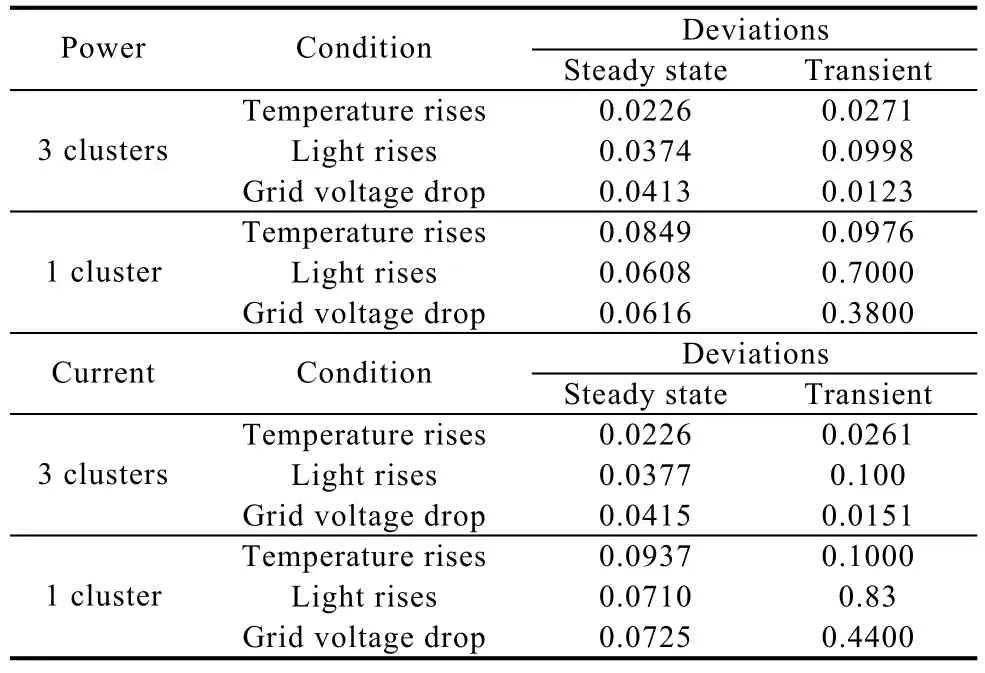
Table 5 Difference contrast tables of equivalence model and detailed model(%)
5 Conclusion
In this paper, focusing on the clustering equivalent modeling of large-scale photovoltaic power plant, the equivalence model of photovoltaic cells, inverters and their control, filter parameters and parameters of collector booster circuit are put forward, and the equivalent model of PV power plants is established. Through the example verification, use of different perturbation methods and through the error analysis of the simulation curve, it was validated that the established model can accurately simulate the actual operation of power plants. The method proposed in this paper can be used as a means to analyze the transient research of large-scale photovoltaic power plants, providing a reference for the research of large-scale photovoltaic power station access to power grids.
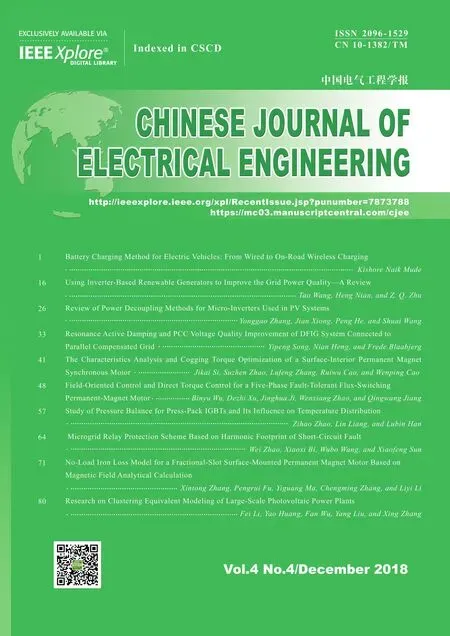 Chinese Journal of Electrical Engineering2018年4期
Chinese Journal of Electrical Engineering2018年4期
- Chinese Journal of Electrical Engineering的其它文章
- No-Load Iron Loss Model for a Fractional-Slot Surface-Mounted Permanent Magnet Motor Based on Magnetic Field Analytical Calculation
- Microgrid Relay Protection Scheme Based on Harmonic Footprint of Short-Circuit Fault
- Study of Pressure Balance for Press-Pack IGBTs and Its Influence on Temperature Distribution
- Field-Oriented Control and Direct Torque Control for a Five-Phase Fault-Tolerant Flux-Switching Permanent-Magnet Motor
- The Characteristics Analysis and Cogging Torque Optimization of a Surface-Interior Permanent Magnet Synchronous Motor
- Resonance Active Damping and PCC Voltage Quality Improvement of DFIG System Connected to Parallel Compensated Grid
